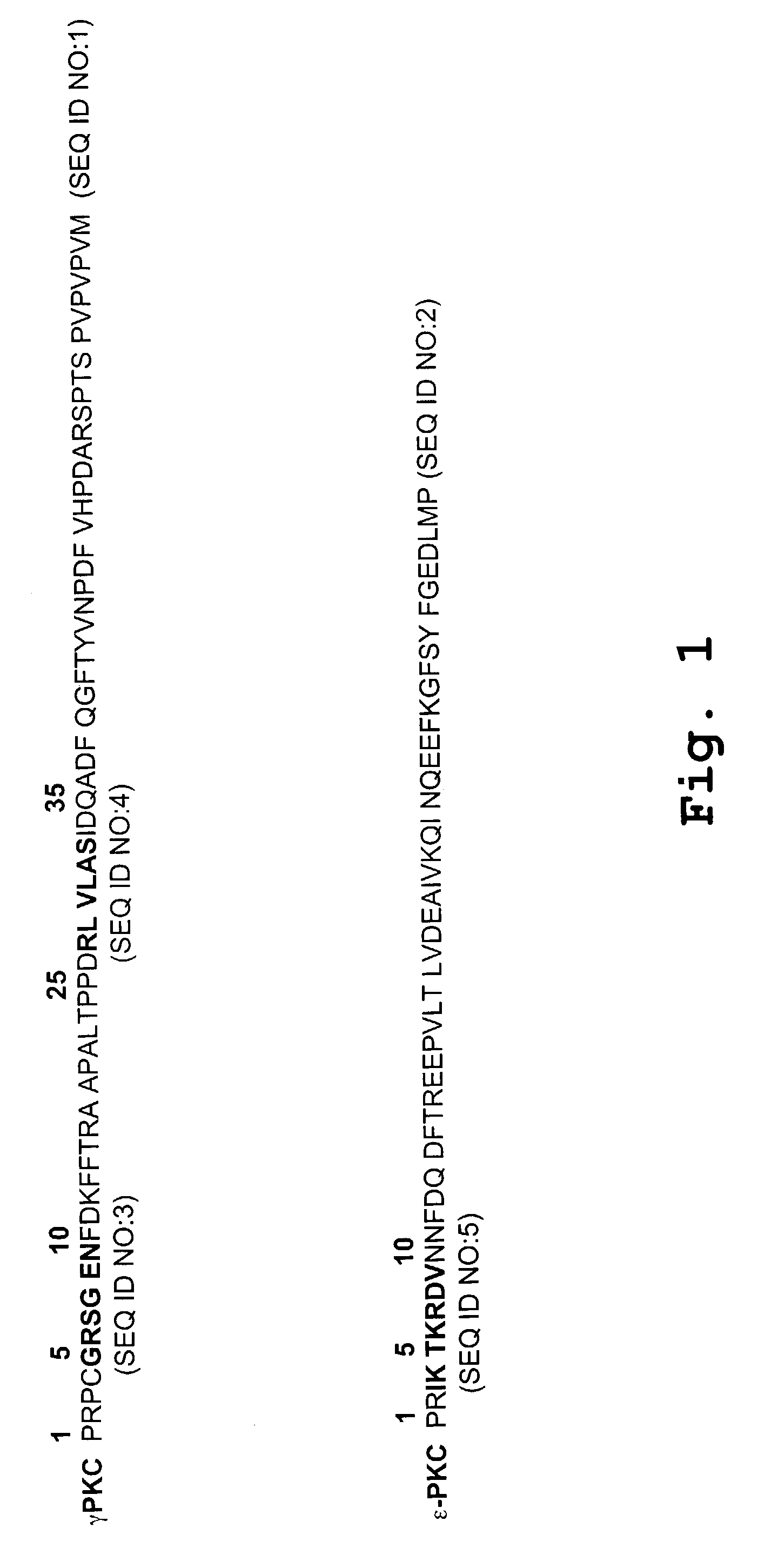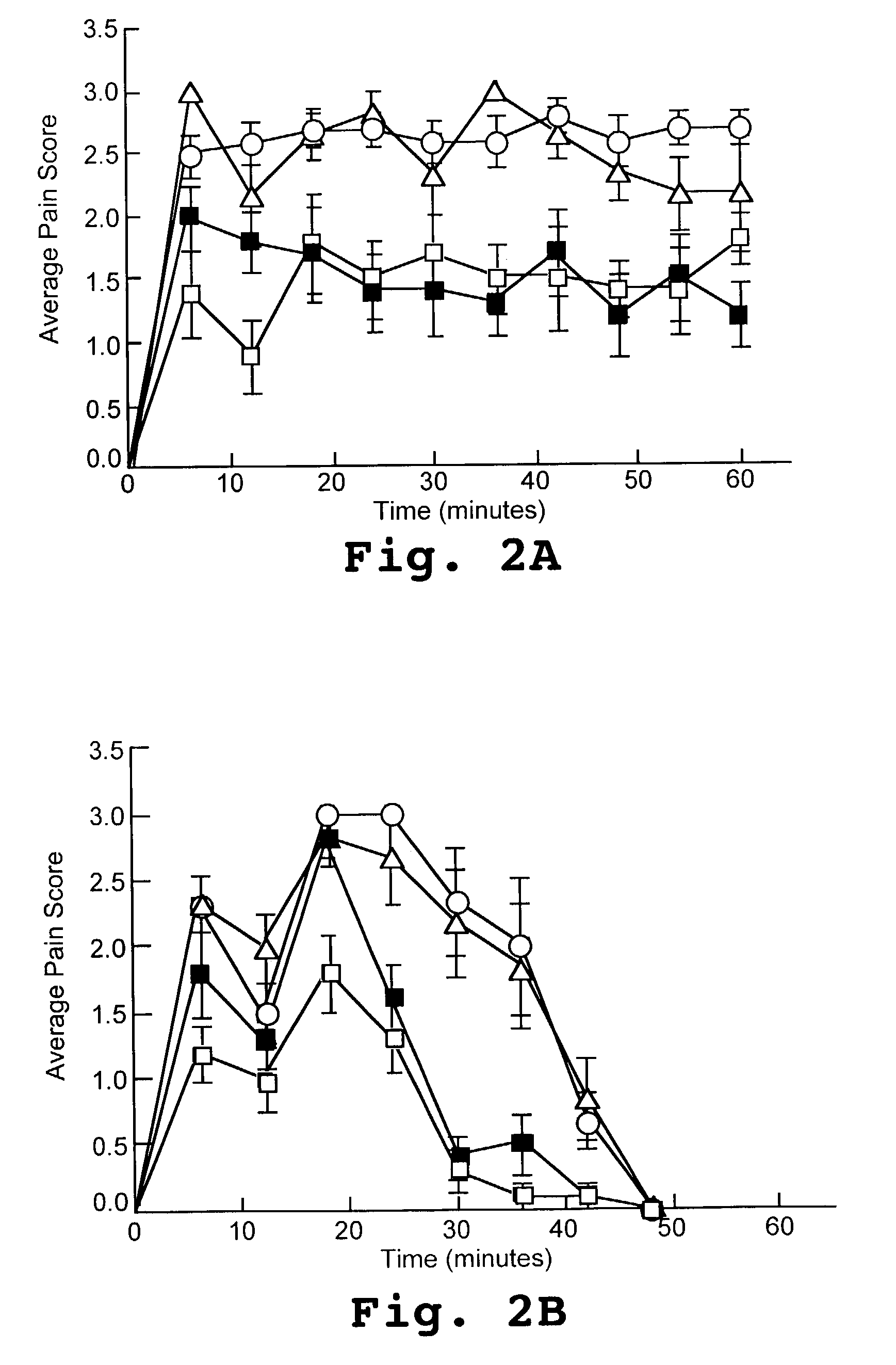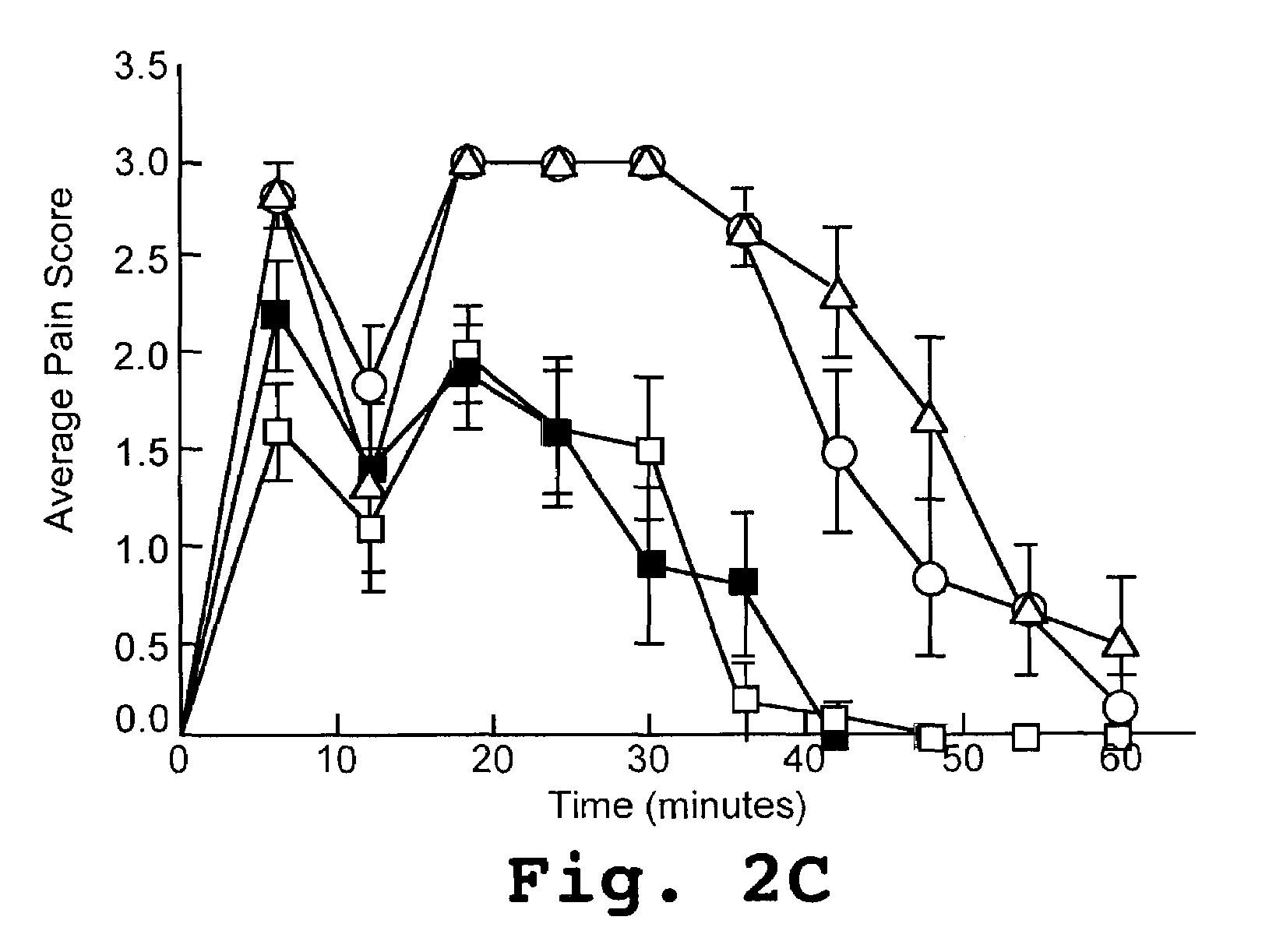Peptide inhibitors of protein kinase C gamma for pain management
a technology of protein kinase and inhibitors, applied in the field of peptides, can solve the problems of large social and economic burden, chronic pain, and loss of $50 billion annually in wages, lost productivity, and medical expenses
- Summary
- Abstract
- Description
- Claims
- Application Information
AI Technical Summary
Problems solved by technology
Method used
Image
Examples
example 1
Effect of PKCγ Peptide on Formalin-Induced Nociception
[0111]Rat pups (male and female, Sprague-Dawley) were randomly divided at selected days after birth (postnatal days 7, 15, and 21) into groups for treatments. Each group received a PKC V5-domain test peptide, a positive, comparative control peptide, a carrier peptide control, or a saline control. The V5-domain test peptide was a γPKC peptide identified herein as SEQ ID NO:4 and as the comparative control peptide was a V1 domain εPKC peptide identified herein as SEQ ID NO:6. Peptides were reversibly conjugated to a Tat-peptide carrier (SEQ ID NO:7) via a cysteine-cysteine bond at their N termini. The peptides were administered via direct lumbar puncture (intrathecal administration) at the indicated dose, typically a dose of 20 μM PKC peptide in 5 μL (7 day old pups) or 10 μL (15 and 21 day old pups) saline.
[0112]Fifteen minutes after administration of the peptides or the control substance, 1% formalin (7 day old pups) or 2.5% form...
example 2
Effect of PKC V5 Peptides on Capsaicin-Induced Nociception
[0116]Adult male Sprague-Dawley rats weighing between 200-250 g were lightly anaesthetized with urethane (800 mg / kg, i.p.). The dorsal surface of each animal was painted with India ink to ensure heat was applied evenly to the dorsal surface. Baseline measurements of all animals (n=10 / test group) were taken for 45 minutes for both C-fibers (0.9° C. / sec heating rate) and Aδ-fibers (6.5° C. / sec heating rate). The test V5 peptide was derived from the V5 region of γPKC (SEQ ID NO:4) and was conjugated to a Tat-carrier peptide (SEQ ID NO:7). As a positive comparative control, a peptide from the V1 domain of PKC (SEQ ID NO:6) was also conjugated to a Tat-carrier peptide (SEQ ID NO:7). The peptides were delivered intrathecally via direct lumbar puncture (10 μM peptide in 20 μL saline) 15 minutes prior to topical application of capsaicin to the left hind paw (100 μL of 3% capsaicin). Saline and the Tat-carrier peptide alone (SEQ ID NO...
example 3
Effect of PKC Peptides on Pre-Existing Capsaicin-Induced Nociception
[0117]Testing of V5-domain PKC peptides for treatment of pre-existing chronic pain is done as follows. The ability of the peptides to reverse established capsaicin-induced thermal hyperalgesia is determined using the procedure described in Example 2, except the test peptides are administered post-capsaicin treatment. That is, after the baseline measurements, capsaicin is administered. Twenty-five minutes later, the test substances are administered over a 10 minute period. Various concentrations of test peptides, 1 μM, 50 μM, and 100 μM are administered to the animals. Thermal testing is then done as described in Example 2.
[0118]Although the invention has been described with respect to particular embodiments, it will be apparent to those skilled in the art that various changes and modifications can be made without departing from the invention.
PUM
| Property | Measurement | Unit |
|---|---|---|
| physical | aaaaa | aaaaa |
| threshold | aaaaa | aaaaa |
| length | aaaaa | aaaaa |
Abstract
Description
Claims
Application Information
 Login to View More
Login to View More - R&D
- Intellectual Property
- Life Sciences
- Materials
- Tech Scout
- Unparalleled Data Quality
- Higher Quality Content
- 60% Fewer Hallucinations
Browse by: Latest US Patents, China's latest patents, Technical Efficacy Thesaurus, Application Domain, Technology Topic, Popular Technical Reports.
© 2025 PatSnap. All rights reserved.Legal|Privacy policy|Modern Slavery Act Transparency Statement|Sitemap|About US| Contact US: help@patsnap.com



